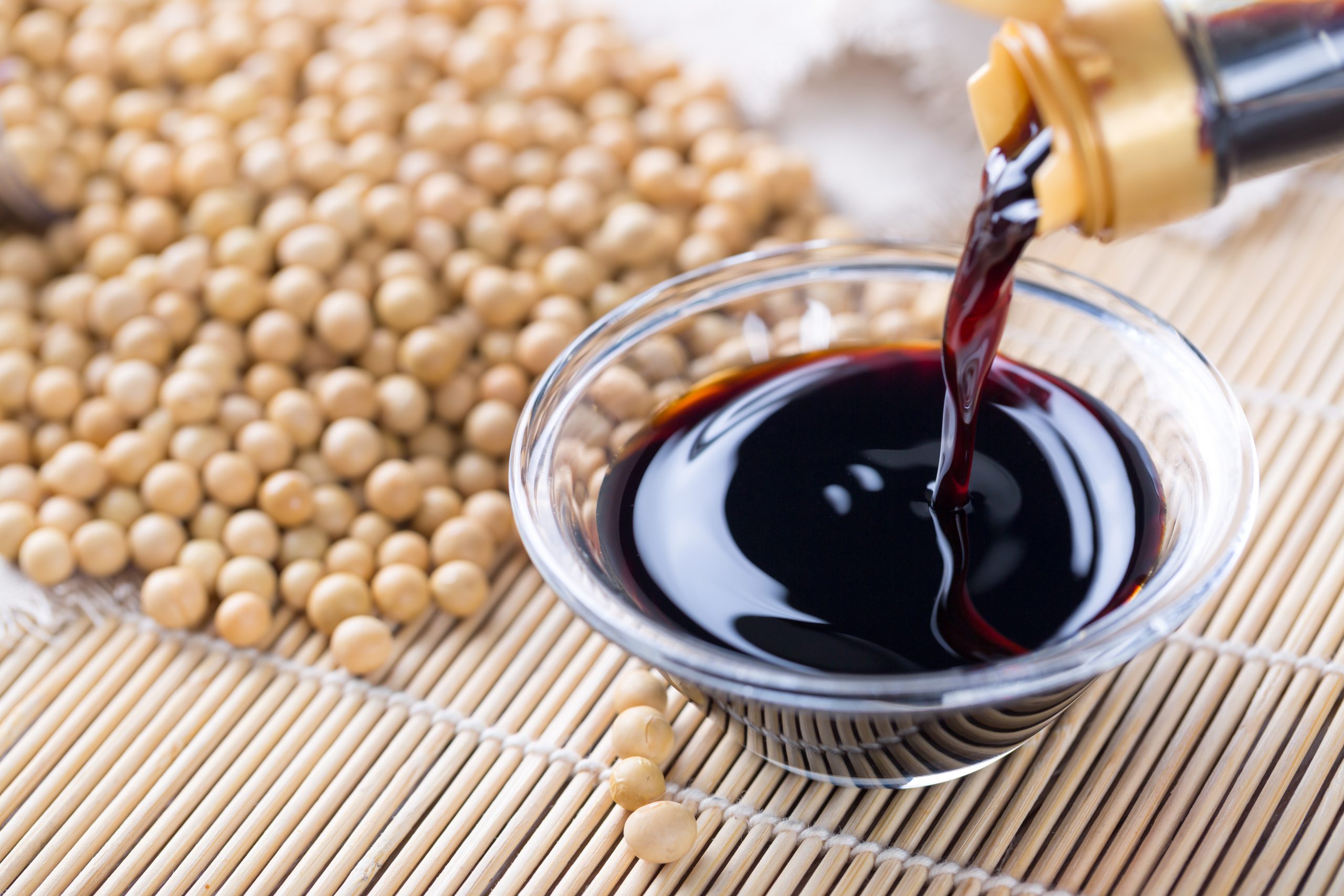Soy sauce is a major ingredient in Japanese cooking, as it is in most Oriental food. Japanese soy sauce is different from Chinese soy sauce, in that the Japanese type tends to be thinner and has a different flavour. Therefore, when cooking Japanese food, always buy Japanese or Korean soy sauce.
Shoyu is simply soy beans that have undergone a long fermentation process, before which roasted wheat, spring water, a starter, and sea salt have been added. After a controlled fermentation process, the mixture is seperated into solids and liquid. The solids are a pulpy mash and the liquid is shoyu. However, this shoyu needs to be filtered and heat treated before bottling to sterilize and stop fermentation.
There are several types of shoyu, two being the most popular. The first is koikuchi, which is regular shoyu. If the packaging simply says shoyu, it will probably be this variety. It is the most aromatic and darkest of the three.
The second is usukuchi, which is lighter than koikuchi. In the West, it is a common mistake to confuse “light” soy sauce with less salt content. As a matter of fact, usukuchi has more salt than koikuchi, but is simply lighter in flavour and colour due to the wheat being more lightly roasted and and mirin being added. There is “light” soy sauce with less salt, but it is not synonymous with usukuchi. It is rather called “lite” or genen shoyu. If you can’t find salt-reduced soy sauce, you can make your own by simply adding some spring water and a strip of kombu to the bottle. The kombu will suck up the salt.
Next is tamari shoyu. Tamari is native to the middle part of the main Japanese island of Honshu, and is a prototype of modern soy sauce. The flavour is the strongest of the previous varieties and thicker because of its low content of water. The residue from the production of tamari is tamari miso. (check out more info about this in All About Miso)
The last type of shoyu is “white”, or shiro. Shiro shoyu uses the least amount of soybeans and more water. As a result, the flavour is subtle and the colour light, hence the name “white”.
When cooking with shoyu, make sure to minimize any salt added to the dish, or simply eliminate adding salt altogether. You should also add soy sauce near the end of cooking, to retain its delicate flavour.
